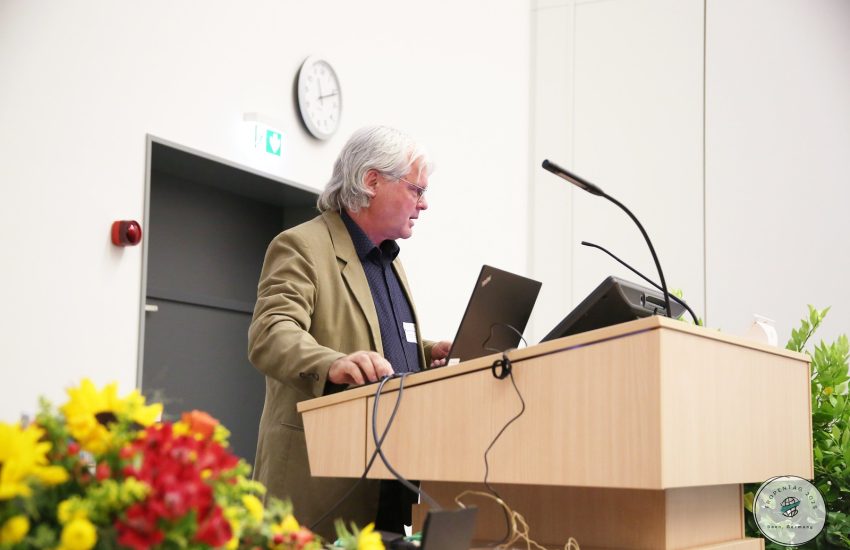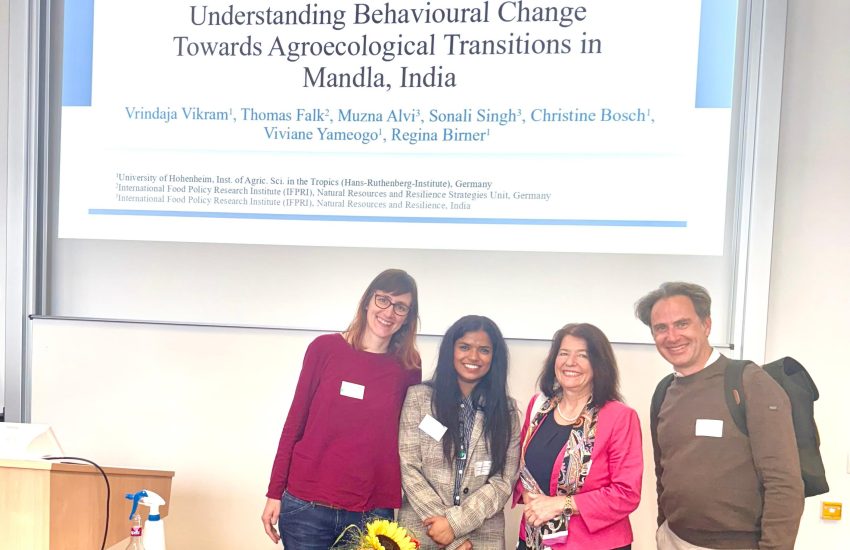Battling global 3Cs (Climate Change, COVID-19, Conflict) through food systems shift
Resilient food systems in the face of crises
The challenges posed by geo-political conflicts, extreme weather events, and economic shocks are not to be underestimated. Across more than 50 countries, hundreds of millions of people struggle with inadequate access to food, and tens of millions are forcibly displaced, and these numbers are always on the rise. It’s crucial to recognize that “hunger” encompasses not only a lack of access to food but also malnutrition, which manifests in various forms, including micronutrient deficiencies and obesity. Alarmingly, the incidence of both of the conditions is on the rise.
In addition to these global challenges, Professor Johan Swinnen highlights other factors contributing to the halt in the decline of world hunger. To address these issues effectively, it’s essential to understand what we mean by a resilient food system.

According to the Johns Hopkins Center for a Livable Future (n.d.), a resilient food system is one that can consistently provide “adequate” and sufficient food for populations, even in the face of disruptions. Resilience, in this context, refers to a system’s capacity to recover from pressures. In our case, these pressures include climatic disasters, the ongoing pandemic, and conflicts and wars.
By focusing on building resilience within our food systems, we can better prepare for and respond to these challenges, ensuring that people have access to the food they need, regardless of the crises that may arise. CGIAR, which is a consortium that IFPRI is part of, aims for enhanced food systems resilience to address the likelihood of more shocks in the future.
How to increase resiliency?
To enhance resilience, several key strategies come into play:
- Climate Mitigation (Prevention): The first step is preventing shocks whenever possible. Climate mitigation efforts are critical in reducing the frequency and severity of climate-related challenges.
- Digital Innovations (Monitoring): In today’s world, monitoring is key to resilience. Leveraging digital innovations and early-warning systems allows us to keep a vigilant eye on potential threats.
- Shock-Absorption (During): When shocks do occur, having mechanisms in place is essential. This involves insurance, financial strategies, and social safety nets that can cushion the impact.
Swinnen highlights these three fundamental approaches to fortify our food systems and emphasizes the importance of ensuring that these measures are inclusive, reaching every segment of society.
Learning from our experiences, both successes and areas for improvement is equally vital. The COVID-19 pandemic is proof of the power of digital innovations in bolstering resilience. However, there’s room to direct more attention to vulnerable groups, such as women and urban communities, as they receive harsher impact.
Small steps towards big changes
Swinnen underscores the potential for substantial transformations, emphasizing the importance of recognizing complexity in the process.
Rather than pursuing one-size-fits-all solutions, efforts should be directed toward tailored, niche solutions that address specific challenges effectively.
Institutional innovations and policy interventions are essential components of this journey. In a world driven by technological advancements and innovation, it’s crucial to consider the user’s perspective. Are these innovations accessible and being utilized to their full potential? Policy frameworks can play a pivotal role in incentivizing users and providing support to those who may face challenges or setbacks as a result of economic or technological shifts. Science, too, can contribute by identifying and mitigating uncertainties related to risks and trade-offs, ultimately reducing resistance to the adoption of innovations.
The path forward involves careful consideration of whether to foster competition or promote complementarity in transformation strategies. This decision goes beyond the individual level and must be institutionalized. We must work on a comprehensive package of solutions that encompass bundled innovations and strategies, driven by both economic and political considerations.
In essence, achieving significant change requires a holistic approach, combining innovation, strategic thinking, and institutional support.
The role of science and the scientific community
During the keynote session, an audience member posed a question that resonated with the sentiments of the 1,200 participants in the room and scientists worldwide: Why aren’t policymakers heeding the advice of science and scientists? And, more importantly, what steps can we take to address this issue?
Swinnen sheds light on a pivotal shift in the way information is disseminated and consumed. Undoubtedly, social media has become a prominent source of information for the majority of today’s society. It’s essential to recognize that information bias plays a significant role in shaping public perceptions of risks and influencing behaviours, with profound economic and political implications. To bridge this gap, we must acknowledge this change in the informational landscape and the preferences of different segments of society, including decision-makers. Scientists must be prepared to engage effectively in these new media platforms that various groups within society, including policymakers, are using to access information and shape their perspectives.
This speech was part of the Keynote speeches and discussion during the first day of Tropentag 2023. Read more on this topic from IFRI’s publication here on food system reform.
References:
Johns Hopkins Center for a Liveable Future (n.d.) Food system resilience, Center for a Livable Future. Available at: https://clf.jhsph.edu/projects/food-system-resilience#:~:text=A%20resilient%20food%20system%20is,and%20accessible%20food%20for%20all. (Accessed: 20 September 2023).



